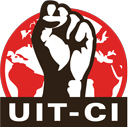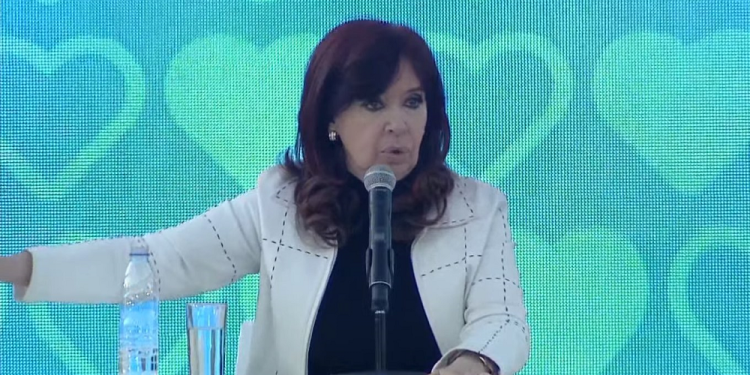By Juan Carlos Giordano, a national congressional representative Socialist Left/Left Front Unity
Last Saturday 16 October, vice president Cristina Fernandez Kirchner addressed the youth in the National Meeting of the Campora (a Peronist organisation created during the first presidency of late Cristina’s husband, Nestor Kirchner) at the former ESMA (Mechanic School of the Argentinian Navy, turned into a clandestine detention centre during the dictatorship and now a museum). She dealt with different topics and defined the present situation of Peronism. She said: “Peronism is more alive than ever”. This is a critical moment for her party, where All’s Front (FdT) she is a member of has just lost five million votes in the primaries and is undergoing a huge political crisis.
In her speech, she tried to dial in the range of politics by resorting to historical arguments. She tries to put a stop to the serious crisis Peronism and her government are suffering. Millions who supported them in the past abandon or mistrust them. Among them, thousands and thousands of young people.
Cristina acknowledged it. She said that, between Peronism and Macrism (Juntos – Together) in previous elections, their joint votes amount to 90 per cent, and now they got 70 per cent of votes. She said 30 per cent went to the “extremes”. One of these extremes is the Left Front (FITU), those who want to “expropriate everything”. She did not mention it openly. The other one would be Milei. She revealed her concern that sectors of the working class and the youth would vote or support the Left Front Unity.
What did Cristina say to rescue Peronism? Her key statement is “Peronism is more alive than ever”, arguing against the left and socialism. She tried to show Peronism is the alternative because it seeks a “capitalism with state control and distribution.” It would supposedly be the opposite of capitalism “without the role of the state”, as Macrism and Milei’s far-right wing claim.
Cristina said capitalism is “the economic system of production of goods and services that have proven to be the most efficient”, and recalled the fall of the Berlin Wall in 1989, finishing her definition by saying that the “socialist or communist system” failed.
If capitalism “has proved efficient” and “Peronism is still in force” because it “regulates, orders and controls it”, how is it possible that we are getting worse and worse? Different governments have passed, among them several Peronist ones (in the 1970s, the 1990s, the twelve years of Kirchner and the two years of the FdT) and Argentina only exhibits more poverty, social inequality, dependence and environmental depredation. Since the fall of the dictatorship in 1983, 38 years have passed, 30 of them under a Peronist government. Therefore, Argentina sorely needs the debate.
There is only one explanation. Neither capitalism is “efficient” for the working class and the people, nor does Peronism “regulate and order” to benefit those at the bottom.
Cristina says that capitalism is the most efficient system when it is the one that has led us to the current threat to humanity and nature. There is no bad speculative capitalism (Macri) and good productive capitalism (Peronism). Capitalism is the only world system, and it benefits a minority. And socialism did not fail. Fake bureaucratic socialism failed. Thus, the masses tore down the Berlin Wall and we in Socialist Left and the Left Front Unity (FITU) repudiated those dictatorial regimes.
Cristina spoke of a virtuous relationship between “capital and labour” … but the capital always ends up winning! There is no “role of the state” that can avoid this “imbalance”, as she illustrated to the young people. Capitalist rules do not work, as Cristina says. The capitalist-imperialist system exists to save a few and plunge in despair millions.
It was Cristina who raised the phrase that in her government the business owners “rake it in”. She recalled a conversation she had with an important food company proprietor to remind him that in her government they made immense profits, asking why now “they don’t want it”. “It’s a cultural problem of anti-Peronism,” she told the young people.
Let’s remember when Cristina took pictures with the Barrick CEOs when she brought in Repsol who plundered our oil and gas and then made a secret deal with Chevron. That is why it is not true that in 2003, when Kirchnerist Peronism took over, they created millions of jobs and there was an increase in workers “climbing the social ladder”. If that had been the case, she would not have lost the presidential elections in 2015 with the Macrism of the tariff hikes and the sidereal indebtedness.
Cristina only criticises the “accumulation of capital.” But what did her government do against it? The sizeable groups continued to monopolise the food industry, the oil and gas companies took our natural resources, the privatisations continued and the banks were another of the big winners of her “model”.
The role of the state that Cristina vindicates is to keep saving capitalist profits. That is the blunt reality. The current incentives to the hydrocarbon multinationals, agribusiness prove this, as the zero retentions to Toyota, the 35 mega-mining projects in the pipeline and the “role of the state” to benefit the usurers of the debt and the IMF.
Cristina told the young people that “with Nestor, we said the IMF goodbye”. She was playing in the gallery. In 2006 they paid 10 billion dollars in cash to the IMF, preaching that indebtedness would end and that there would be no more economic dependence, while in the 12 years of the Peronist Kirchnerist government, they paid a debt of 200 billion dollars and it increased from the original 190 billion dollars to 240 billion dollars in 2015. And it carried out the debt swap that came from the dictatorship, recognising the usurious devalued bonds when it was the Argentinazo (2001 social unrest that threw five presidents in ten days) that imposed non-payment. Now, under this new Peronist government of the FdT, they have already paid12 billion, and the indebtedness left to us by Macri is being negotiated, even with the endorsement of a law of Congress. This is a proposal in which both Peronism, the Macrism of Juntos and the “libertarians” Milei and Espert agree. Only FITU is against it.
The FITU fights to put the wealth of the country at the service of fighting poverty and environmental degradation, not to benefit a parasitic minority of business people, banks and oligarchs. Only by suspending foreign debt payments and breaking with the IMF, nationalising the banks and foreign trade, as all privatised companies under the control and management of workers and users’ organisations and planning the economy for the benefit of the broad majorities will we move forward. Fighting capitalism and fight for another system, the socialist one, with full democracy for the workers and the people.
Looking back on these reflections, we say that if we want to take the historic 17 October as a reference point, we could say that, to achieve social justice, economic independence and political sovereignty, the workers and the people must govern. Something that never happened, although the former president has said that “Peronism had the hallmark of incorporating the workers into the decision-making system of national politics”.
So, it is not reinventing Peronism with recipes that have already failed, but of pushing hard to continue strengthening a political alternative of workers, women, youth and the unity of the left, as we are doing with the FITU.
Meanwhile, we keep on with this rich debate with the workers and youth, and on 14 November, we call to vote for left-wing deputies who in the streets and Congress will continue to support the workers’ and popular demands and, in this way, continue to strengthen a workers’ and socialist political alternative to fighting the capitalist evils.













